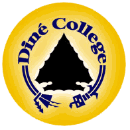Online Learning Module
Welcome to the Center for American Indian Resilience (CAIR) Online Resilience Learning Module. This online module will help build resilience into health promotion and policy. Throughout the module current data, research and resources will be provided for use to Tribal and Urban Health Workers as well as all American Indian Community Members. The module will explain the definition of resilience, the types of resilience, and characteristics of a resilient community to help you develop your own goal and objectives to integrate resilience into your community. The module will also help you know what health disparities American Indians face, what social determinants of health, cultural competence, and how to find reliable health information to help you address health inequities. Lastly, the module will present resources available to you and examples of resilience in action to provide you an overview of how your program should function.
The Center for American Indian Resilience (CAIR) is a team of health professionals, graduate, and undergraduate students who work together to plant and foster resilience into public health promotion and policy. Through the use of traditional knowledge, collective memory and cultural strategies we want to teach and encourage positive health outcomes and behaviors. CAIR works to integrate tribal elders’ wisdom, knowledge and experience into contemporary public education and health promotion intervention. Our team is comprised of professionals from Northern Arizona University, University of Arizona, and Diné College. The center is divided into five cores which are a collaborative effort to document health strategies and positive behaviors that demonstrate resilient in Native American communities. These cores are:
- Administration and Evaluation
- Research, Education, and Training
- Community Engagement and Outreach
- Research
- Pilot Research
Mission
To partner with American Indian communities to promote health and resilience.
Vision
To promote strong, healthy and resilient American Indian communities.
Goals
- To examine community assets, e.g., the role of traditional knowledge, collective memory and cultural strategies in teaching health behaviors and supporting positive health outcomes.
- To document these health strategies and positive behaviors oftentimes not collected in public health research.
- To transfer and integrate tribal elders’ wisdom, knowledge and experience into contemporary public education and health promotion intervention.


